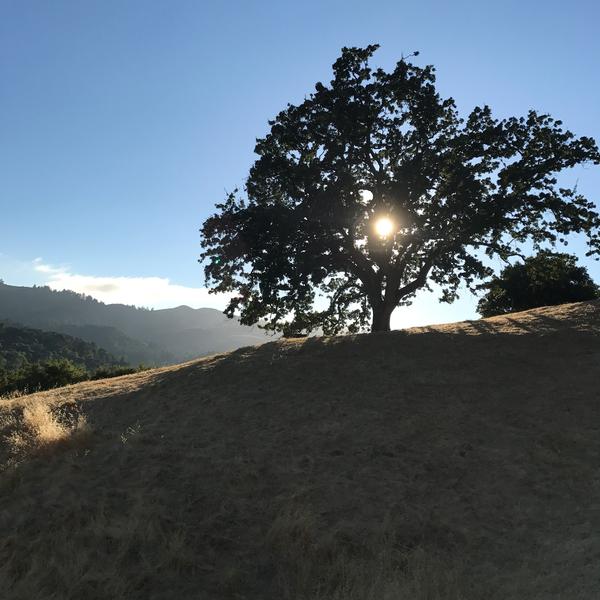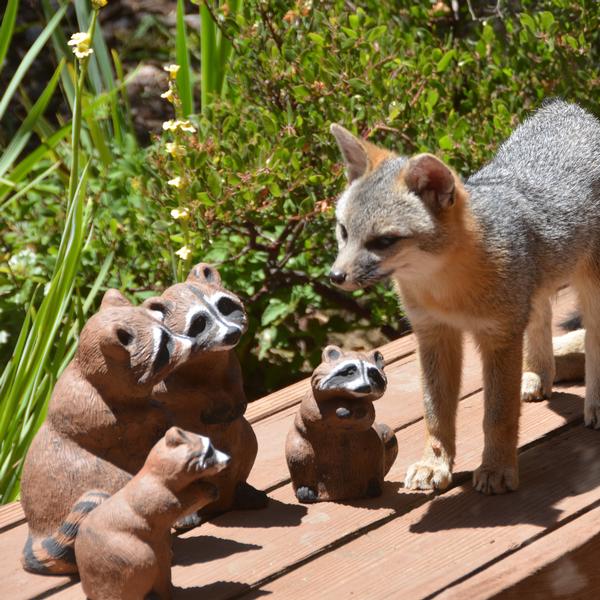The founders of Portola Valley Ranch carefully planned and designed the homes to integrate with the natural surroundings, thus ensuring that native habitat abutting open space was preserved and that the land around each home was in harmony with the natural environment. This continuous flow—from native landscaping around individual homes to the protected open space of Coal Mine Ridge—enhances the experience and value of the development in this wildland-urban interface location. Portola Valley Ranch appreciates these principles and respects the natural environment in which it is located.
Detailed guidance for homeowners with regards to Sudden Oak Death, invasive species, and human-animal interactions may be found in the Land Management Plan. Homeowners on the Wildland Urban Interface must always manage wildfire risk--read the PVR Fire Risk Management Guidelines to learn how.
Landscape
 Land
Land
The natural lands of Portola Valley Ranch, a mix of foothill oak woodland, grassland, pond, and other ecosystems, are biologically diverse as well as visually serene and lovely. Rare species such as Western Leatherwood occur near huge heritage oaks, and deer, hawks, butterflies, and other native fauna are commonly seen.
 Native Plants
Native Plants
In the early planning stages of Portola Valley Ranch, The Town of Portola Valley and the Ranch developers agreed upon a design approach drawing the vegetative patterns of the surrounding hillsides down around the homes, without using fences. Today, the native plant landscaping requirement helps maintain contiguity between homeowner lots and the natural flora and fauna of nearby wildlands. Native plants also help create a coherent sense of place where residents feel in harmony with their surroundings.
Only plants indigenous to California may be installed in the ground at Portola Valley Ranch. Please take a look at our detailed and searchable Approved Plant List.
For information on when you would need to seek design approval for landscaping work, please see Section 3.1 of the PVR Design Guidelines.
 Land Management
Land Management
At Portola Valley Ranch, staff and committees seek to accomplish the following:
- Preserve the aesthetic vision of the founders: The original landscape plans emphasized harmony with surrounding vegetation patterns. The landscaping was also zoned to increase the areas retained in a natural state. The plant palette relies primarily on locally native plants, which can be found in nearby open space preserves.
- Maintain a safe and welcoming environment for residents and guests: Living at the intersection of community and nature should be a safe, welcoming, and healthy experience for Portola Valley Ranch homeowners. Due to the suppression of wildfires, fuel build-up can create wildfire hazards unless regularly mitigated. Fire risk management, including grass mowing and other fuel reduction on homeowner and association owned land, helps to mitigate wildfire risk and maintain our nationally recognized Firewise Community rating.
- Reinforce and uphold high habitat values: Healthy plant and animal habitats improve the experience of living at the Ranch in many ways. They provide natural pest control, prevent erosion, preserve biodiversity, act as a buffer against noise and light pollution, and offer many other benefits.
- Minimize disturbance: Portola Valley Ranch strives to minimize disturbances to the land both onsite and offsite. Disturbance that negatively affects habitat values may be off-trail recreation, noise and light pollution, poisons which travel through the food chain, invasive species, plant diseases, litter, loss of animal predators, and more.
- Respond to changing environmental conditions: Climate change and its attendant changes in temperature, precipitation, pathogen dispersal, invasive species movements, and other factors all create management challenges. These must be responded to with flexibility, innovation, and dedication to the founding principles and the governing documents.
Additional information on all of these topics can be found in PVR's Land Management Plan.